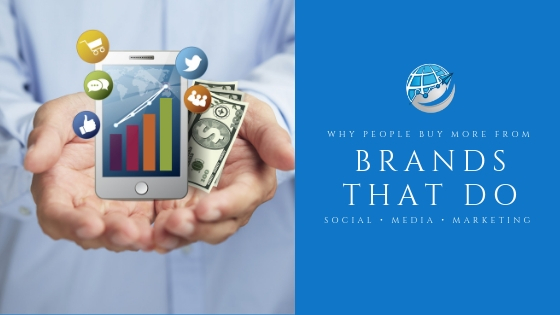Consider this: Every 4 out of 5 businesses in the U.S. invest in digital marketing.
Digital media has become an integral part of people’s lives. It is constantly changing the way customers approach businesses, products, and even services.
And smart brands know they need to keep up.
Back in 2011, a study by Google revealed that online advertising alone resulted in a 6% increase in sales. When combined with traditional marketing channels, sales increased by 11%!
Fast-forward 7 years later. The global digital population today has doubled since then.
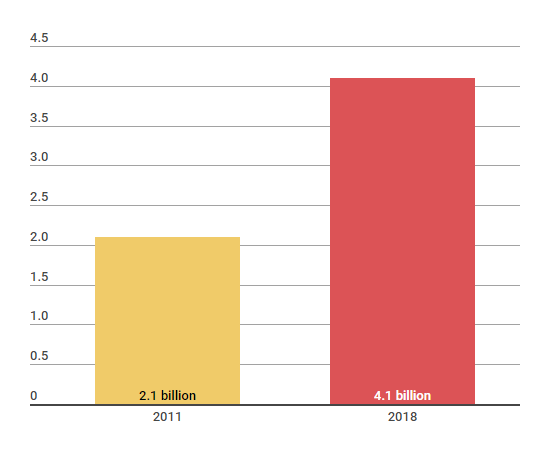
And so have its effects on businesses, sales, and conversions.
So, why exactly do people buy more from brands that invest in digital marketing?
What is it about this media that prompts them into making a purchase?
Here is why digital marketing can help businesses increase their sales:
It Creates Brand Awareness
First of all, digital marketing is not just about increasing conversions, getting higher click-through rates, or ranking on top of search engine results.
It’s also about increasing exposure, putting your brand out there, and ensuring more people are familiar with it.
An average adult in the U.S. spends over 6 hours daily engaging with digital media, out of which 3 hours are spent on mobile.
This means brands with a digital presence are able to reach customers where they’re spending most of their time.
And people are more likely to buy from a brand they know about than one they’ve never heard of before. Or just aren’t as familiar with.
Digital marketing also helps you build a loyal customer base by perpetually keeping your brand, products, and messages in front of your target audience.
It also helps generate leads and sales in the long run.
It Helps Build Credibility and Trust
Today’s digital era makes it almost necessary for businesses to have an online presence if they want to be taken seriously.
According to the latest data, between 70-80% of consumers look up a business online before making a purchase decision.
Moreover, with an estimated 2.6 billion social network users worldwide, buyers are increasingly relying on social proof before they decide to buy something.
That’s because people trust other people more than brands.
If there are lots of happy customers leaving positive reviews about your brand on social media, potential customers will be more likely to trust you and purchase your products.
Similarly, existing customers will also be more likely to buy from you again.
Here’s another fun fact: Around 40% of users follow their favorite brands on social media platforms.
These people, even if they aren’t loyal customers yet, are offering brands an opportunity to build better relationships with them, developing deeper trust and loyalty in the process.
Here’s how ELF Cosmetics uses Instagram to build trust and better relationships with their customers:

Posting behind-the-scenes content like this can help your brand appear more human and transparent to your customers. The more they relate to you, the more likely they’ll be to trust you and buy from you.
This is another reason why influencer marketing is so powerful. Brands who reach out to influencers are essentially using them to develop trust in their potential customers.
It Lets You Reach Mobile Users on the Go
Over 90% of internet users are on mobile.
Unlike its traditional counterpart, digital marketing lets you reach your customers regardless of where they’re located. It ensures your customers never miss a single message from you.
Reaching your audience on the go also helps you be more relevant.
For instance, tons of brands are using geolocation to target their messages according to where their customers are at any given time.
Dunkin’ Donuts uses geolocation to send out weather-targeted messages to its customers:
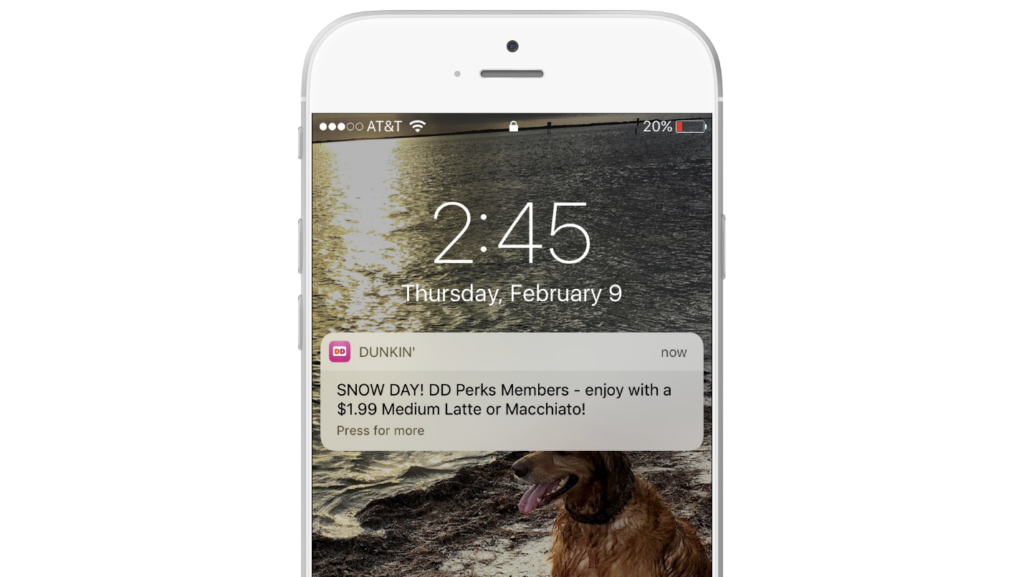
People naturally feel more tempted to consume hot beverages during chilly days. And that’s exactly what DD is taking advantage of.
Again, notice how relevancy is key here to lure customers into making a purchase.
Another reason reaching customers on mobile is so effective is the increasing popularity of mobile commerce. Customers all over the world are relying on their phones to search for products and directly make purchases.
Digital marketing offers brands an opportunity to take advantage of this by creating and promoting mobile-friendly online stores, and even mobile apps.
It Creates Engagement and Personalized Experiences
The best part about digital media is it enables two-way communication between brands and customers.
This enhances customer experiences on an individual level, and facilitates the development and nurturing of better, more meaningful relationships.
Take social media, for example. Customers can interact with your brand in so many different ways. They can like, comment on, and share your content with their friends and family.
Better yet, you can respond to them.
ASOS does a great job at keeping its customers engaged with their #AsSeenOnMe campaign:

The fashion retailer asks customers to include the hashtag in pictures of themselves wearing the brand’s products. ASOS then features selected pictures on their account, along with the customer’s username.

Not only does this campaign keep customers engaged with ASOS, it also develops mutually beneficial relationships between the two.
Increased levels of engagement helps brands relate to their customers, instead of just selling to them. This eventually leads to more conversions and loyal, happier customers.
Moreover, digital platforms let you tailor your messages to cater to different kinds of customers. This means you’re able to deliver personalized experiences to your customers on an individual level.
It Helps You Keep Track of Performance
There’s nothing worse than not knowing where you’ve spent your money. With digital marketing, however, that’s hardly ever a problem.
There are tons of metrics you can track on digital platforms that show you how well (or badly) your marketing campaigns are performing.
Whether its engagement levels, impressions, reach, views, or even the time each user spends looking at your content, digital metrics have got you covered.
There are various tools out there, like Hootsuite, to help you manage and measure your performance on multiple digital channels all from one dashboard.
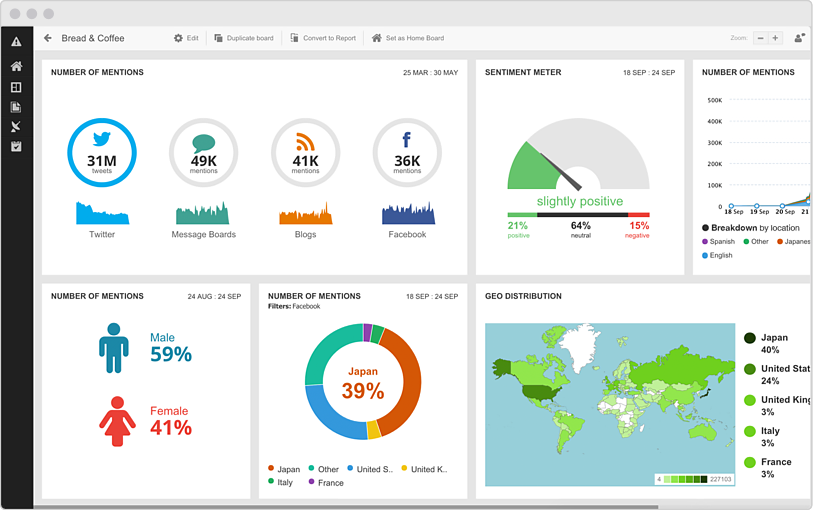
Because of how easy it is to keep track of performance on digital media, brands are constantly improving and becoming better at showing customers exactly what they want to see.
This constant improvement leads to even better results, increased sales, and a higher ROI.
It Enables Real-Time Customer Support
The internet enables constant communication between you and your customers.
It lets you offer them 24/7 customer support, and multiple channels through which they can get in touch with you.
A lot of brands, such as Nordstorm, are incorporating live chat into their websites and online stores for real-time customer service:
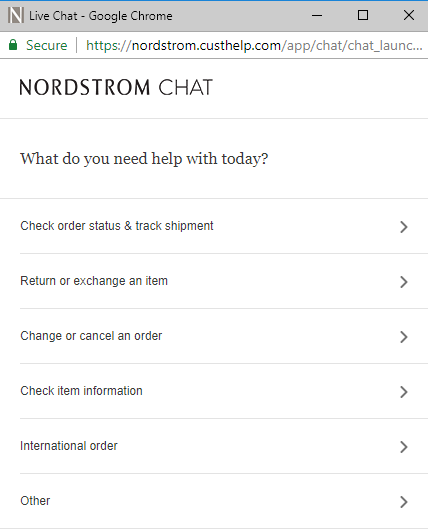
The quicker you respond and address their concerns, the more satisfied your customers will be. And happy customers are more likely to make repeat purchases.
It Helps You Stay Updated with the Latest Trends
Customer demands are constantly changing. Having an active digital presence helps you stay updated and on top of what’s hot or not.
The more up-to-date you are with your customers, the better content you’ll be able to create. Your marketing efforts will resonate with them on a personal level, helping you appear more relevant.
Moreover, you can always monetize on viral content and trends your customers are obsessed with.
Here’s how Gucci jumped on the bandwagon by posting ‘memes’ on its Instagram account:

Digital media also lets you stay ahead of your competition by ensuring you don’t miss out on any new, emerging marketing tools and techniques.
Go Digital or Go Home
The list of reasons why people buy more from brands that do digital marketing is endless. The truth is, marketing today is nearly impossible without digital media.
It’s where customers are spending most of their time. And brands either need to keep up, or risk falling behind the competition and eventually crashing down headfirst into failure.

